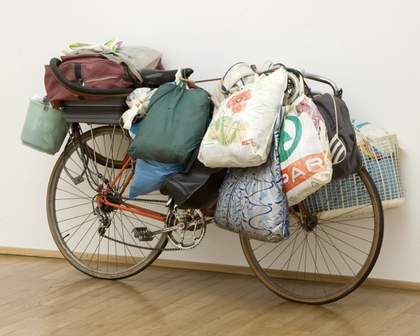For a number of years the Museum für Moderne Kunst Frankfurt am Main MMK has been collaborating with artists that come to Frankfurt for a period of time to install their works of art or fulfil commissions. Many works originate on site and are at least partially affected by local conditions. In such cases we have a golden opportunity to accompany the artist’s activity for some time, which generally generates mutual trust. All experiences are archived in the form of pictures, videos, artist interviews, documentation, sketches, schemes, material samples, etc. Working with the artists so closely illuminates their different approaches and methods: there is the accurate planner, the extemporiser, the doer, the orderer, the waverer, the single-minded and the focused. But we are always dealing with artistic actions that will shape the future handling of the artwork.
Are replicas interesting specifically in relation to the beginning of the twentieth century? More recently, terms like ‘original’, ‘conceptual art’, ‘sculpture’, ‘installations’, ‘performance’, no longer seem tenable or appropriate. Consequently, terms like ‘replica’, ‘copy’, ‘duplicate’, and ‘remake’, which relate to the idea of ‘originality’ are used less frequently.
We are becoming almost accustomed to the fact that the work of art can no longer be presented with the primary material or equipment. This material or equipment might no longer exist on the market, might have become technically obsolete, or might not have been stored or documented. But what do we then call the original? For this reason, I think it is especially important to keep, document and archive whatever we can, even if there is no clearly defined original artwork.

Fig.1
Andreas Slominski
Untitled 1991 2007
Mixed media
115 x 175 x 85 cm
© Andreas Slominski
When Andreas Slominski created his first bicycle for a homeless person, he was more interested in the message than the durability of the worn and common plastic bags. Today, just a few years later, we are faced with the problem of preserving them. Even under ideal conditions, the autocatalytic process of the degradation proceeds. Indeed, the bicycle tyres and tubes, as well as all other plastic parts, will not last forever. Should we let them deteriorate because they are meant to or should we put everything into storage for future reference and build a replica? Slominski is very interested in the preservation of his work but has no concrete proposal for how it should be carried out. Tests were made to reconstruct the bags or copy the images onto more stable supports. But how should we deal with the dirt and signs of wear and tear? They will differ too obviously from other parts. And if we try to emulate or make a reconstruction, the question arises of whether one should transfer the idea of the work into the present where the homeless use mountain bikes and more fashionable bags. The configuration of the elements is not adventitious. Slominski notes: ‘Moving one bag just a centimetre is like relocating a tree in a painting ten centimetres.’ I believe it is our duty to develop appropriate methods to keep the artwork as long as possible in its decay.
What is the unforeseen degradation of materials? Can the artist make ‘mistakes’ when choosing a material for their work of art? Are these mistakes not to a greater degree part of the artistic process and therefore part of the historical evidence? What do replicas tell us if the documentation is so precise? Can we replicate only degrading sculptures or also paintings and installations?
In the field of archaeology items are reconstructed because it is hard to imagine how, for example, Celtic jewellery looked without the clothing. Musical instruments are reconstructed to experience the sound. Even the reconstruction of Naum Gabo’s Standing Wave has its justification in demonstrating this phenomenon. But when cellulose acetate was first used as an artistic medium the quality of the material had a certain meaning. I believe rebuilding a work in this instance would crucially deny this historical component. And if the degradation is unstoppable we might reconstruct it for educational reasons but not for display as a work of art in a public exhibition. If an artwork decays materially we have to find ways to recall it in other forms. There is a generation emerging that is used to dealing only with images and their display and not the physical objects themselves. At some point in the future – even though we are obliged to do everything we can to preserve a work of art – good documentation may eventually take its place.
